More bearish trend guidance
The volatility spread remains bearish.
The interest rate/stocks spread turned bearish.
The equal weight/market weight spread turned bearish.
The RSI Trend signal returned to bearish after one day in bullish territory.
Mixed Trend Guidance
The volatility spread and synthetic volatility remains bearish, but the RSI Trend Indicator returned to bullish and the moving average study remains bullish. My focus is mainly the volatility spread chart when working with the Russell 2000 Index.
Trend Guidance increasingly bearish
Three of seven trend guidance systems I am watching are now bearish. The volatility spread turned bearish on 31 December, while synthetic volatility and the RSI trend indicator turned bearish on 2 January. One or two continue to look bullish, while several more (like the moving average crossover system) look as if they could turn bearish if recent weakness continues.
Volatility Spread Guidance
The Volatility Spread generated a bearish signal on Tuesday, 31 December 2013 on the daily chart. This is the first bearish signal from the indicators I am currently watching. This means that things may be interesting on Thursday when the market is next open.
Synthetic Volatility Guidance
VIX Term Spreads offer better overall guidance than synthetic volatility. Synthetic volatility tends to be more volatile, leading to more frequent trading and whipsaws. That said, the daily and weekly trends are up. You might consider entering bearish positions when the spread crosses below its moving average.
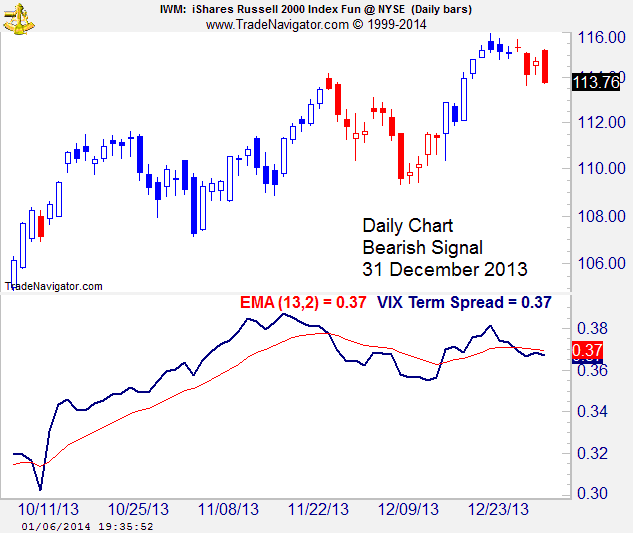
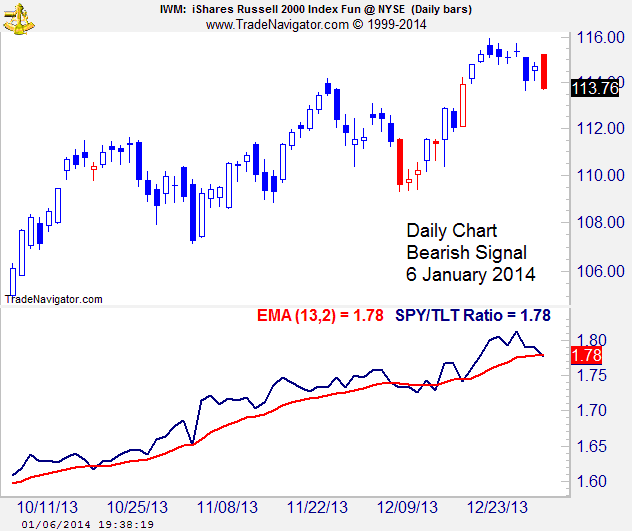
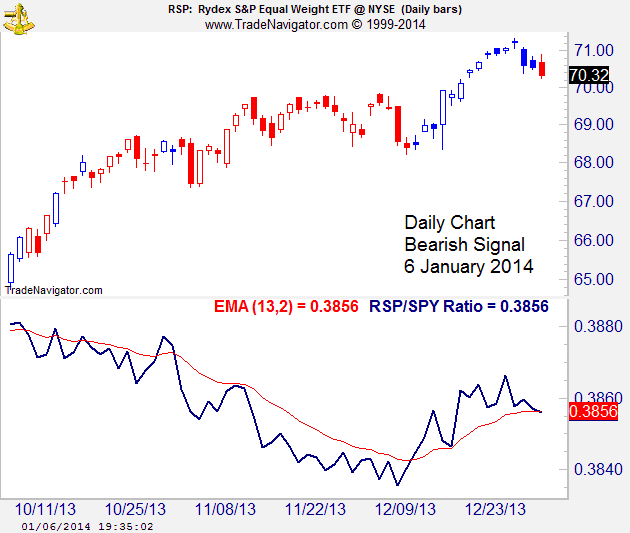
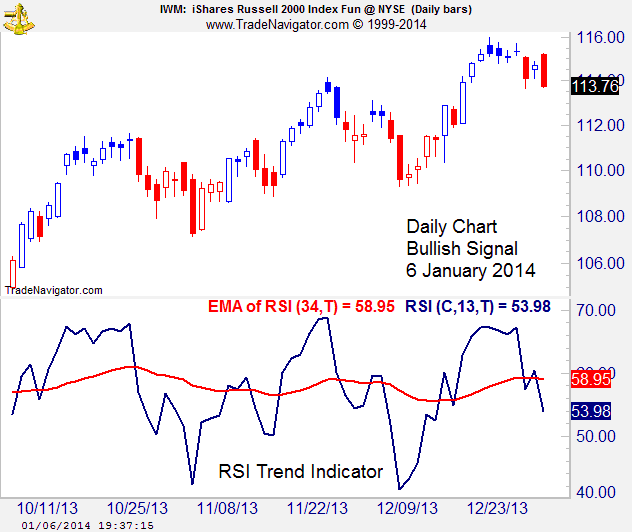
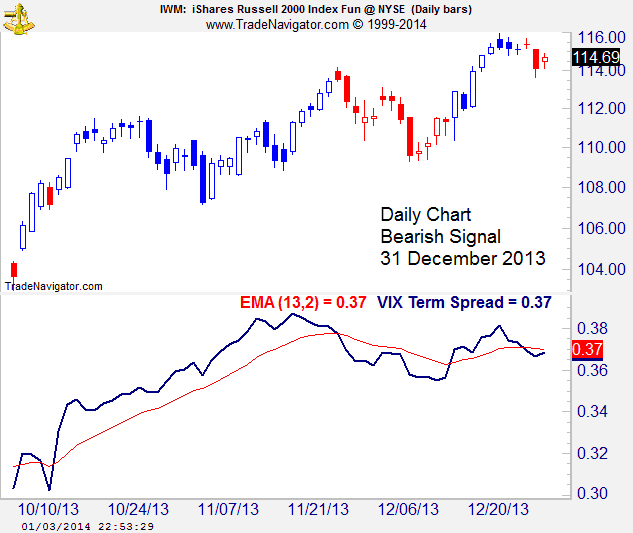
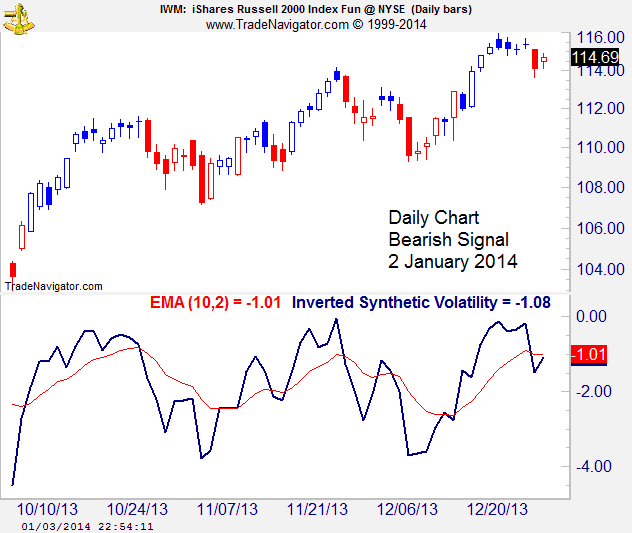
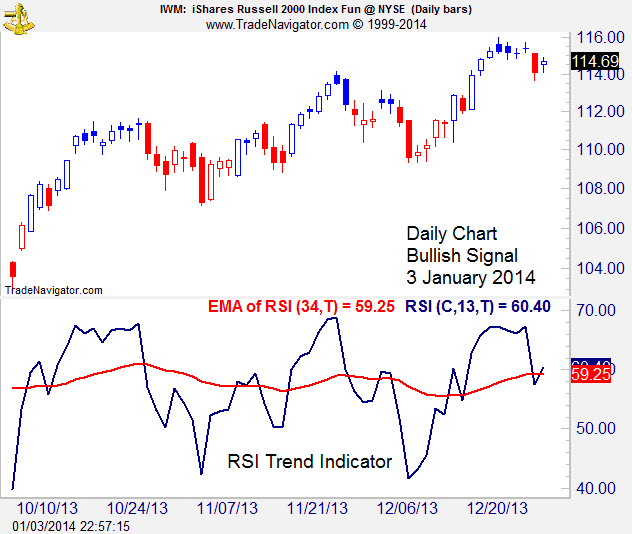
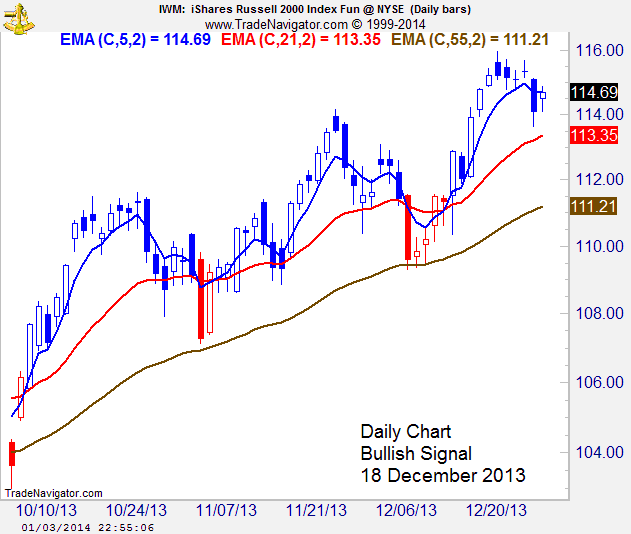
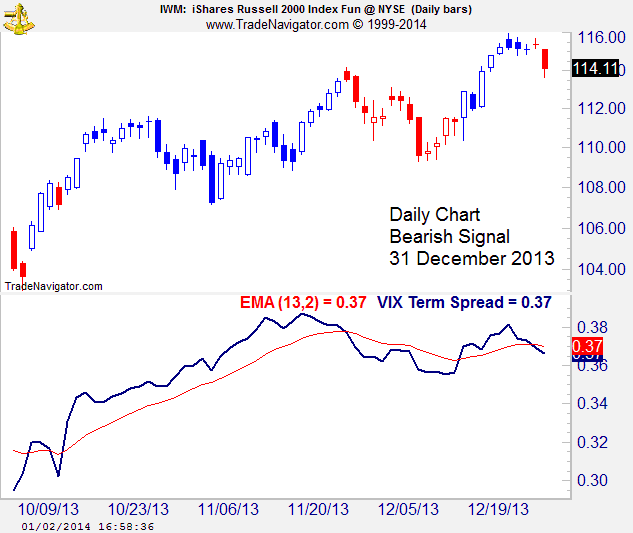
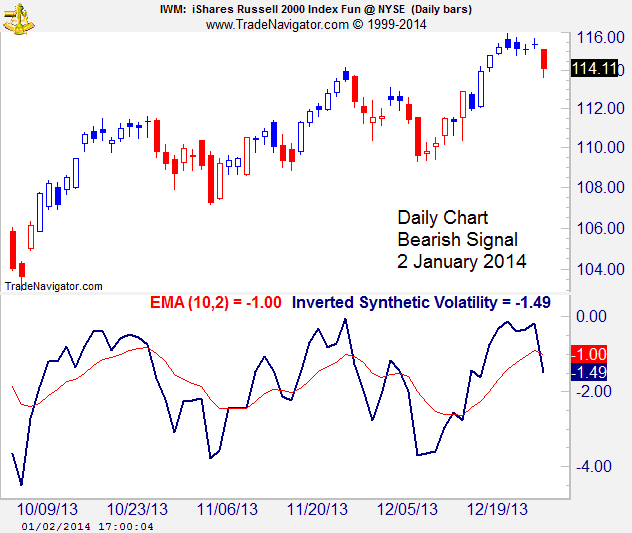
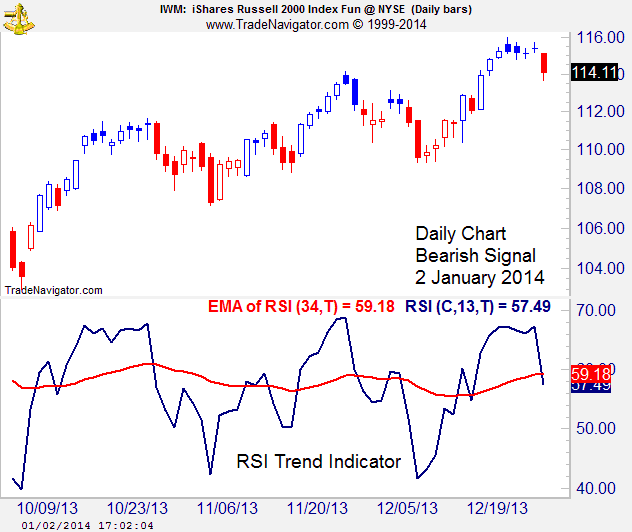
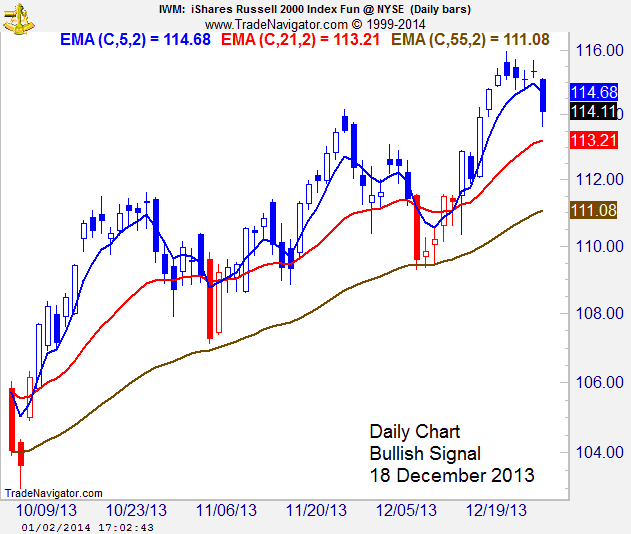
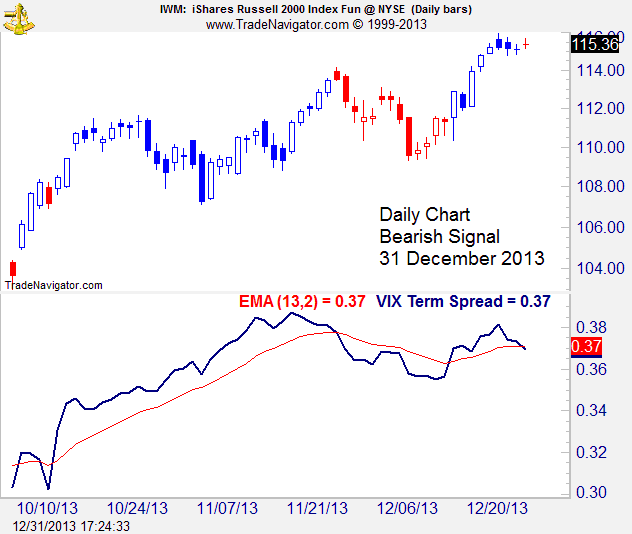
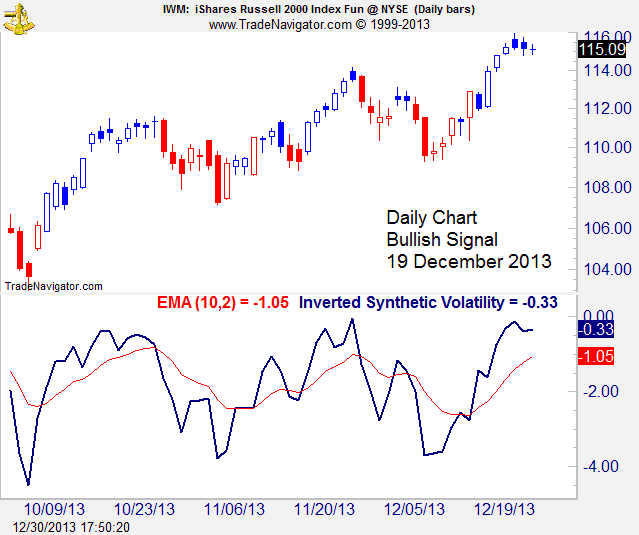

 Financial markets are predictable because segments of price action fit together in a limited number of patterns that are not random. Markets are unpredictable too because there is enough variability in the patterns to hide the trend at some stages of development. I am fascinated by the market and spend a lot of time working to identify price trends so I can exploit them for profit.
Financial markets are predictable because segments of price action fit together in a limited number of patterns that are not random. Markets are unpredictable too because there is enough variability in the patterns to hide the trend at some stages of development. I am fascinated by the market and spend a lot of time working to identify price trends so I can exploit them for profit.